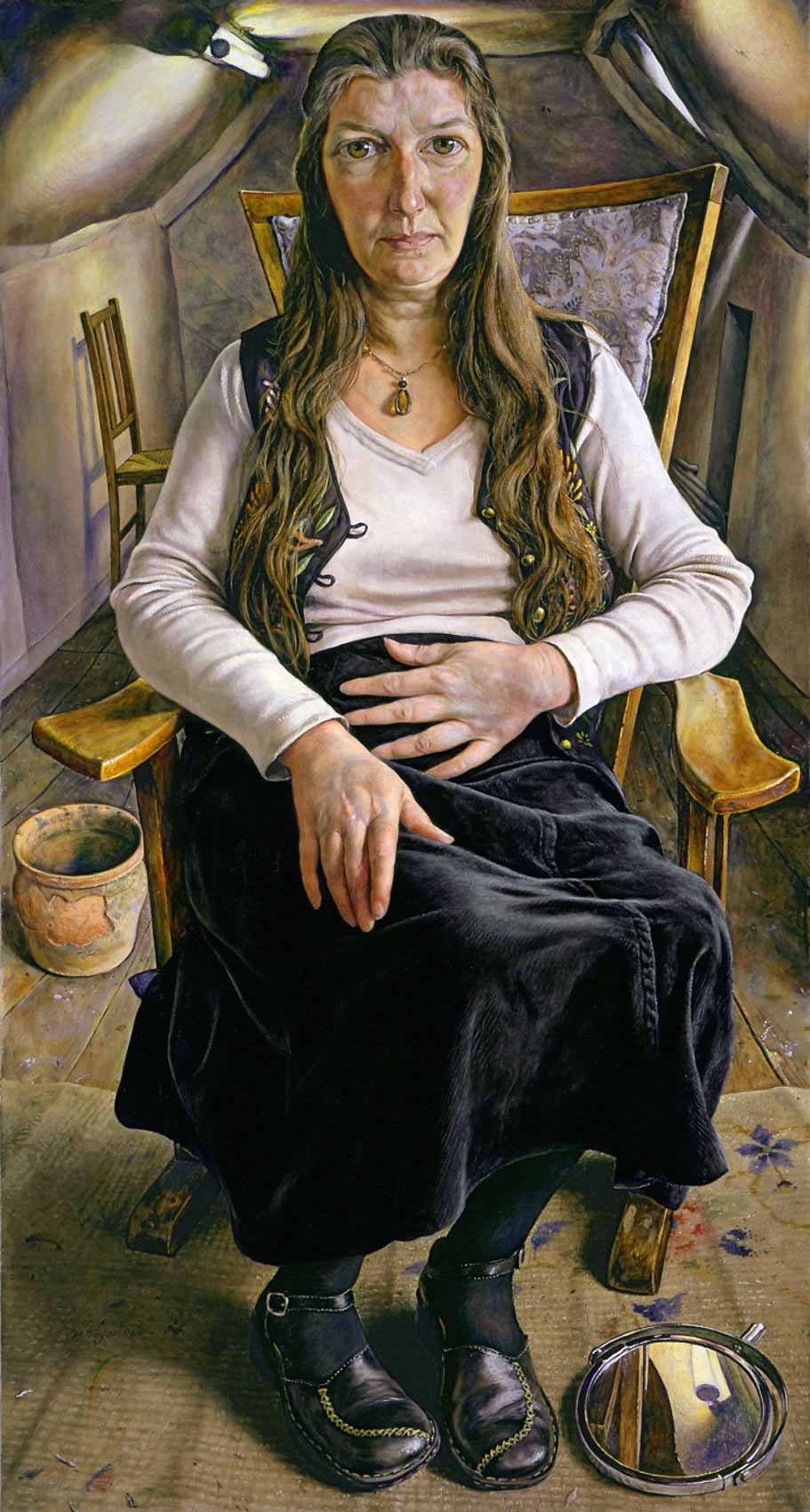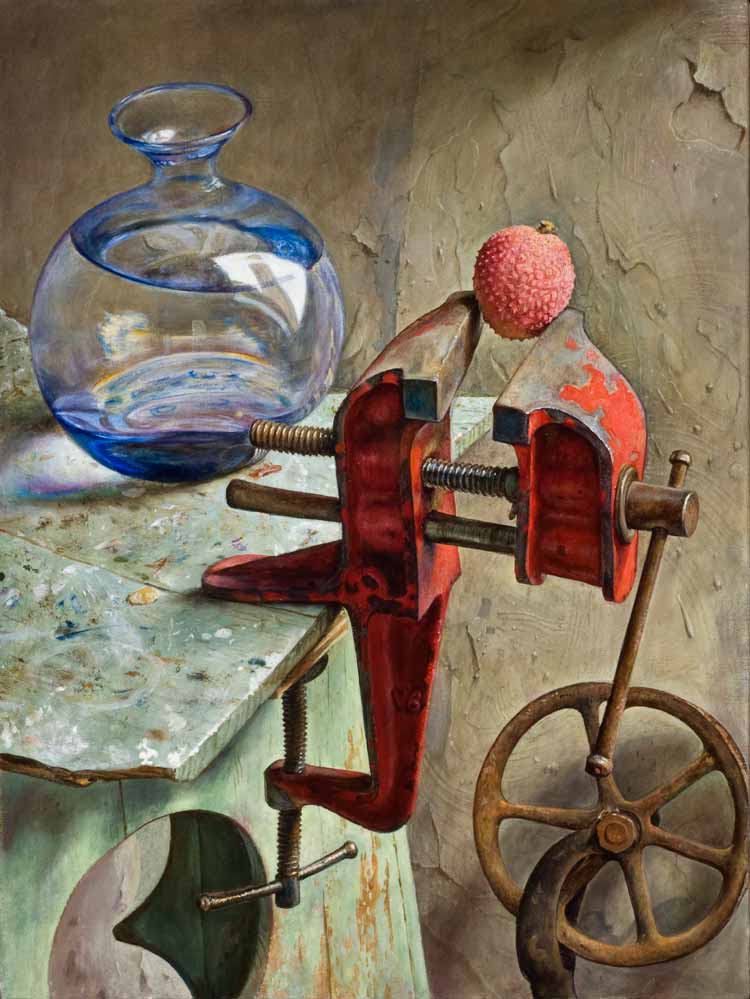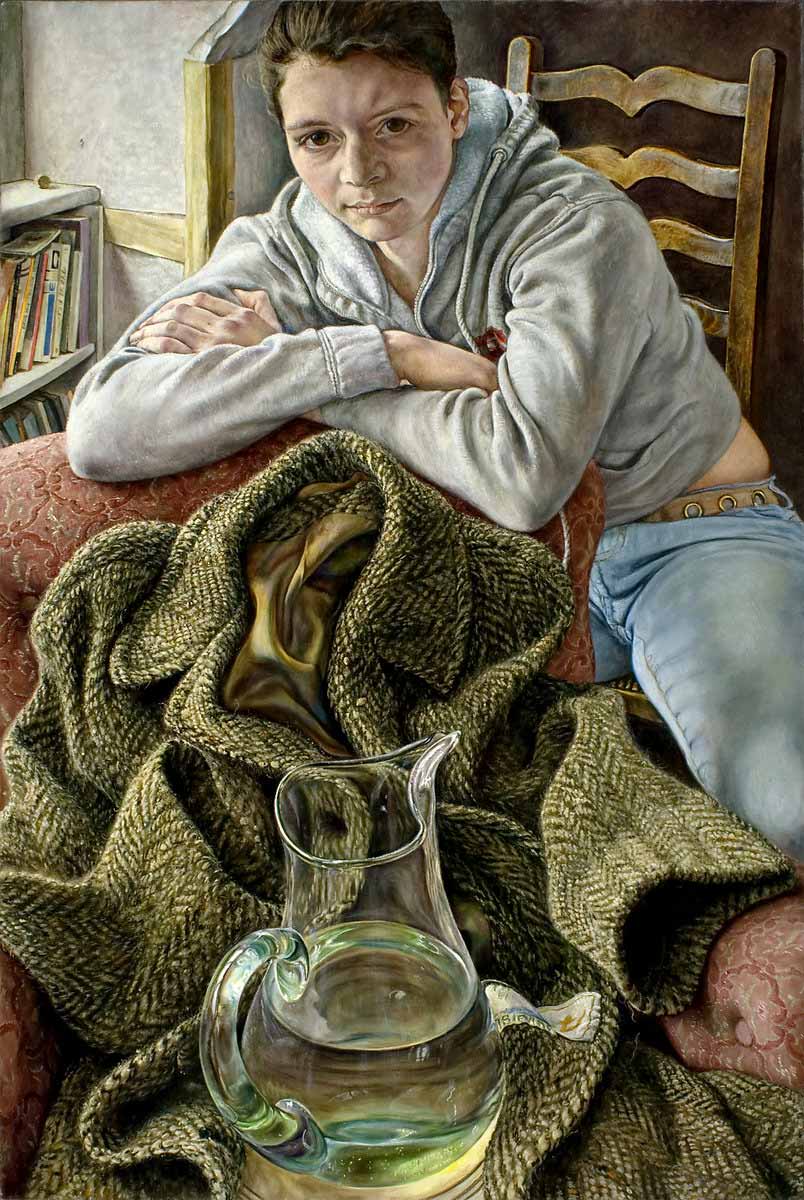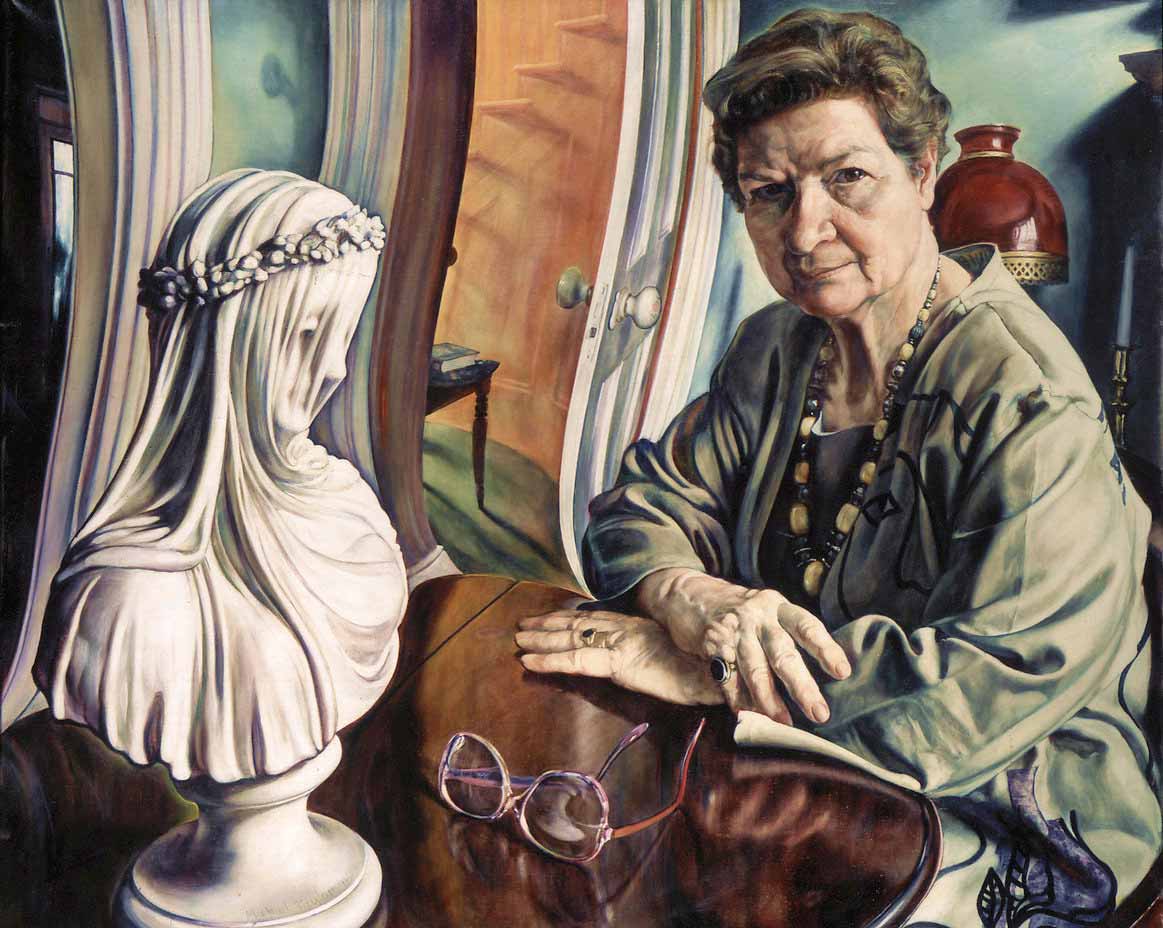Artist Spotlight: Michael Taylor
Website Editor • Feb 26, 2020
Everyone’s work is deeply idiosyncratic: in our regular Spotlight segment we explore artists’ experiences and inspiration to understand what defines and inspires their unique styles.

Can you give us a brief background on yourself?
I was always drawing as a child, usually pictures of the things that interested me at the time. So plenty of sailing ships, trains, cowboys, Dennis the Menaces, and caricatures. The greatest treat on pocket money days was a new black Bic pen and a pad of paper. Things changed overnight when I was unable to make a boat shape right, I put a model on the table and drew it to life. The profound difference this made and the fascinating business of creating an illusion of reality started me on a lifelong journey towards firstly making this illusion convincing, and then subsequently subtlety subverting it. My father had a well stocked book case including books on surrealism, British modernism, Japanese printmakers, Salvador Dali. and annuals of Giles cartoons. All of which got digested and incorporated in my work. With his support I gave up A-levels and went to Worthing Art School, and then Goldsmiths to study fine art for three years. After leaving I considered a career driving London buses, but became inspired by reading a biography of the painter Mark Gertler. I decided to paint for a year supporting myself working every evening in a pub in Greenwich. I did two paintings both of which were shown at the Royal Academy. When both sold, I gave up the pup job and have continued to do one painting after the other more or less without a break since.
What kind of influence does your location have on your career?
Not being a landscape painter, very little really. Having said that, the Dorset landscape where I live is littered with Iron Age burials with their associated grave goods. This has certainly influenced some of the poses and accompanying props in a number of works such as, Portrait with Grave Goods. Also, finding a Victorian rubbish dump being eroded into the sea while fossil hunting gave rise to a whole series of still lives of broken, discarded, and modern fossil-like everyday objects.
What is your greatest source of inspiration?
That varies from time to time depending on what I'm attempting to achieve, but in no particular order: Vermeer, Stanley Spencer, Velazquez, Francis Bacon, early Lucian Freud (Girl with a Rose of 1948 was in one of Dad's books and I never really got over it), Fra Angelico, and strangely the cartoonist Carl Giles, who's wonderful manipulation of perspective taught me a huge amount.
Could you pick one piece of art that has made a lasting influence on you, and if so why?
I would say probably the Girl with a Rose by Freud for it's stillness, intensity, controlled distortions, and just it's very strangeness. It is quite clearly based on a real person but the rigour of the observation has pushed it somewhere very disturbing.
What skills or techniques do you find most useful in your line of work? Do you use primarily traditional or digital methods to create your artwork?
Mostly techniques that would be familiar two hundred years ago. These have evolved over millennia from cave painting onwards to service our seemingly primal need to create a 'likeness' and are very effective. By this I don't mean likeness in the portrait sense, but the need to create or possess convincing recreations of the things we need, fear, or love. This of course includes traditional portraits, but also inventive manifestations of deities, or convincing depictions of food or prey. While mostly working from life, I do employ stereoscopic transparencies to assist in the studio and have had to invent and build suitable equipment. A good stereo large format slide contains a wealth of visual information about form and surface totally missing from normal photographs. This is particularly useful assisting with a portrait of someone too busy to give me the many hours I normally require. My iPad mini plays a very similar role to the drawing pads and biros from my childhood, and I love playing about on it. Sometimes even including sketches or cartoons in emails. Indeed, this interview has come about as a result of sending fan mail to Scriba when I bought one of their stylus! So far the only way I have used digital techniques professionally is to put photos of paintings I am working on into Procreate so that I can experiment with alterations to composition or tone without time consuming experiments on the actual canvas.
How can people who are interested in discovering more of your work find it?
Most of my work has been studio based and is in private collections, but a selection can be seen on my website www.mrtaylor.co.uk. Quite early in my career I was lucky enough to win the National Portrait Gallery Award and this led either directly or indirectly to a number of portrait commissions which can be seen in various public collections including the NPG London, the Holburne Museum of Art Bath, and the House of Lords. I am represented by the London gallery Waterhouse and Dodd and am a member of the Royal Society of Portrait Painters. Finally, if you ever see the Wes Anderson film the Grand Budapest Hotel, I have to confess to being none other than the late Johannes Van Hoytl, creator of the much coveted, much travelled Boy with Apple painting. Very much a one off!
Scriba is a revolutionary digital stylus that is ergonomically designed to comfortably fit your hand and uses unique Squeeze-Motion technology. Order here.
Articles

The United Nations has described the disruption to education caused by the pandemic as ‘unparalleled’. At the virus’ worldwide peak in April, it is estimated that over 90% of all enrolled learners, from kindergarten to bachelors and beyond, had their education affected by school closures and the pandemic (UNESCO). For many university students and older children, they have had to adapt quickly to online learning. They can keep in touch with their peers and teachers online and continue their studies, albeit in a highly modified way. As challenging as this may be, this experience will help equip them for a future that is increasingly online. For parents of younger children, they are assuming a new role: their child’s home school teacher. This is in addition to their usual childcare and household duties, their work responsibilities and often emotional and financial worries caused by the pandemic. Stressful? Yes. The good, and somewhat surprising, news? The experts advise that you don’t teach your children - at least not in the way you might expect.

If the recent outbreak of Covid-19 has taught us anything, it's that many adults do not wash their hands effectively. It has never been more important that we support our children to develop good personal hygiene to keep themselves and our families safe. This seemingly easy task can be very difficult for children with fine motor skill difficulties. In this article, we explore some ideas to support your child with hand washing.

Lockdown has brought the digital future into the now. Online shopping, entertainment, education and more have moved from the periphery to the mainstream to, in many cases, the only option. With the necessity of social distancing looking to continue for many months, it appears that this rapid digital revolution is here to stay. This means that life as we know it, in most of its sectors, has changed forever. In order to survive, businesses are having to adapt rapidly, embrace technology and look to the future. Architecture is no exception. There has been a widespread adoption of technology and VR over the past few months in response to the lockdown across all of society. Elderly grandparents who were once resistant to adopt new technologies talk of “Zooming” and have started video chatting with their family members to combat loneliness. Art galleries that were once considered stuffy or pretentious are now pioneers in VR technology, with Google Art & Culture offering tours of London’s National Gallery or the Musee D’Orsay in Paris. These virtual tours deliver art in a dynamic new way that can be far more engaging than regular photos. Critics have applauded the panoramic and immersive views of gallery building and exhibitions which work well for rendering of 2 dimensional art, however impressions of sculpture is somewhat lacklustre. With VR technology, users can enjoy a truly immersive experience in the comforts, and safety, of their own home. The COVID-19 pandemic has served as an accelerant for the arts and entertainment industries to embrace VR.







